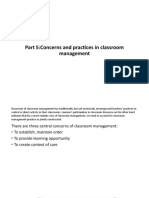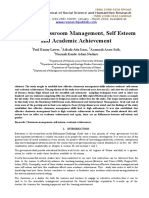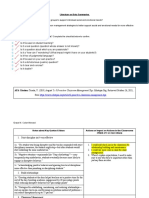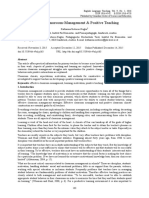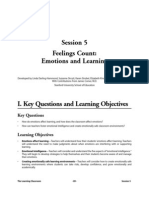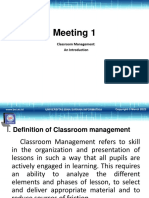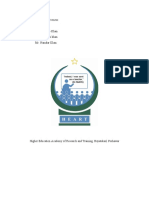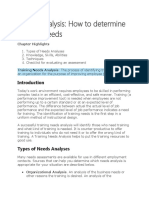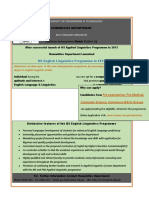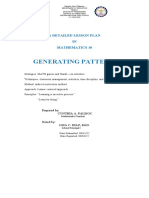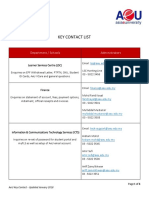0% found this document useful (0 votes)
185 views4 pagesEmotional Impact on Classroom Management
Emotional state affects classroom management in several ways. Positive emotions in students help with learning by improving focus, memory, and problem-solving abilities. Negative emotions like anxiety can impair learning. Teachers also experience emotions that impact their management approaches - positive emotions encourage collaboration while negative emotions promote reactivity. Effective management involves understanding classroom dynamics and guiding activities based on the emotional context. Teachers must employ conflict management strategies like integration, compromise, and avoidance to address emotional aspects of conflicts and promote a positive classroom climate for learning.
Uploaded by
madiha raoCopyright
© © All Rights Reserved
We take content rights seriously. If you suspect this is your content, claim it here.
Available Formats
Download as DOCX, PDF, TXT or read online on Scribd
0% found this document useful (0 votes)
185 views4 pagesEmotional Impact on Classroom Management
Emotional state affects classroom management in several ways. Positive emotions in students help with learning by improving focus, memory, and problem-solving abilities. Negative emotions like anxiety can impair learning. Teachers also experience emotions that impact their management approaches - positive emotions encourage collaboration while negative emotions promote reactivity. Effective management involves understanding classroom dynamics and guiding activities based on the emotional context. Teachers must employ conflict management strategies like integration, compromise, and avoidance to address emotional aspects of conflicts and promote a positive classroom climate for learning.
Uploaded by
madiha raoCopyright
© © All Rights Reserved
We take content rights seriously. If you suspect this is your content, claim it here.
Available Formats
Download as DOCX, PDF, TXT or read online on Scribd
/ 4


